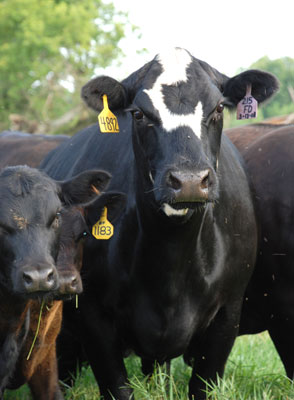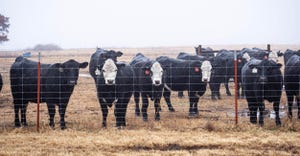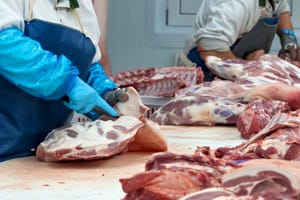Back To The Future With Heterosis
Darren Wilkes stresses that heterosis is one of the easiest way to improve our production and efficiency.

Talk to a feedyard manager about cattle and he’ll ask some pretty basic questions. Darrell Wilkes knows that, because, as part of his job as ABS manager of beef supply systems, he helps find homes for 75,000 to 100,000 feeder calves every year that were sired by ABS bulls.
“What the feedyard guy asks us are two or three very simple questions,” Wilkes says. Those are: How big will they get? How fast will they get there? How much feed will it take for them to get there?
While you’re pondering the answers to those questions, Wilkes says the feedyard manager fills the silence with an even simpler question – “If average cost of gain is $1/lb., will these cattle you’re pitching me feed for 90¢ or $1.10?”
While the genomics researchers and breed associations are working to find answers to those questions, Wilkes says the industry already has the technology to help itself genetically enhance many economically relevant traits, especially at the ranch.
Speaking at the recent Beef Improvement Federation meeting in Bozeman, MT, Wilkes said he heard many interesting presentations on the genomics of animal health and feed efficiency.
“But folks, we already have the genetic technology and the know-how to breed cattle that stay healthier and handle stress better. We already know how to breed cattle that produce more output for the same amount of input. We’ve had the technology for decades on how to make cows more fertile and breed earlier in the breeding season and live a year or two longer. We have the technology to add $100/cow/year to a commercial cow-calf operation.”
It’s called crossbreeding.
Wilkes says that doesn’t mean that genomics research on those topics isn’t needed. It is, and the beef industry has made amazing strides in tying economics to that knowledge. “We’ve done more in the last 10 years in bio-economic modeling than we’ve done in perhaps the last 30 or 40 years.”
But for a solution to many of the genetic advancements the industry is trying to make that will work in the dirt and mud, the wind and sunshine of a commercial cow-calf operation, it’s hard to beat heterosis, he says.
Not all of his estimated $100 to $125/cow return is hard cash, he says. “If you expect the packing industry or feeding industry to pay you more for crossbred cattle, and you’re depending on a signal to do that, I think you’re missing most of the puzzle, which is unit cost of production on the ranch. That should be something that would motivate a cow-calf producer just from the benefit of lowering his unit cost of production and getting more production out of the same resource without additional dollar input.”
About the Author(s)
You May Also Like



